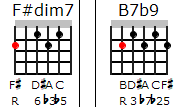The chords are:
E7 - A7/C# Am6/C
E7 - A Am/C
I’ve been playing over it, and even though I like what I hear, I would feel 100% comfortable knowing the reason why those chords are in there (I’m just beginning to seriously study some harmony).
Highly looking forward to read what you guys think about this progression.
Update: After a few bars the tonal center changes.
The whole thing looks like this:
(E major specified in the key signature)
E7 - A7/C# Am6/C
E7 - A Am/C
(A minor/C major specified in key signature)
Am7 - Bm7 Bbm7
Am7 - D13sus2
Cmaj7 - Dadd11
Cmaj7 - D13sus2


